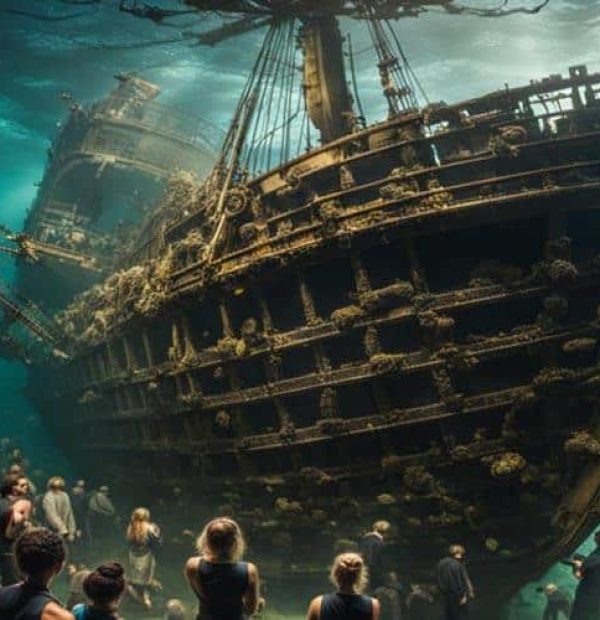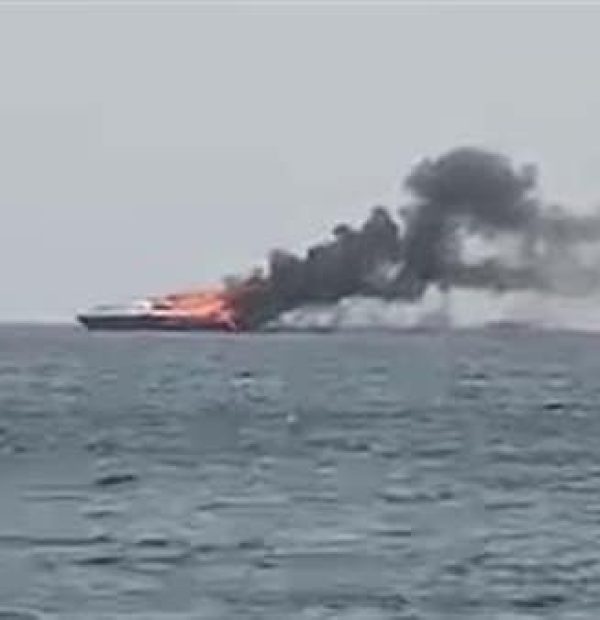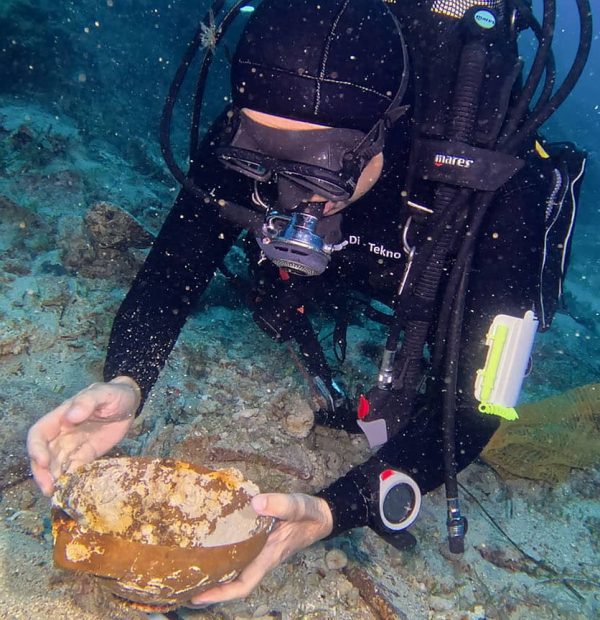Monday, 22 April 2024
Menu

In closed circuit diving, one of the best ways to ensure dive safety is to make sure that the unit assembly and control tests have been done correctly before diving. However, even if you do your due diligence on the surface, including packing the canister and then carrying out a full set of control tests, there is always a chance that something will go wrong. An example is the incident caused by elevated CO2 levels, during a cave dive 400 metres from the entrance. The only reason the participants survived the incident was because of effective teamwork and a high level of situational awareness, which allowed the participants to understand that not everything was OK and that action was required.
The following report written by Phil Short is about an instructor evaluation dive in the French cave system. The dive involved three students, a trainee instructor and an Instructor Trainer (IT). Phil (IT) carried out the instructor evaluation during the dive.
Rebreathers were assembled and tested on site in accordance with both the unit checklists provided by the manufacturer and checklists in accordance with training standards, prior to diving. The bailout cylinders were stacked in the lake prior to entering the cave, before the pre-dive checking procedures were carried out. The divers entered the water at a point where the water was up to their waist to put on their fins and strap on the cylinders. In the lake, the water was stagnant, with no flow, and there was fines and organic debris floating on the surface. All divers closed the loops in the CCR while carrying out the last activity, which was putting on the fins. When the divers bent down the mouthpieces of the breathing loops were under water, which is normal.
The observed diver (the trainee instructor) put the mouthpiece in his mouth, blew air to clear it of water, then switched the DSV to CCR mode and breathed normally, monitoring the primary and backup pO2 readings to confirm correct operation of the device. When all divers were ready the dive began.
The divers descended to a depth of 30 m, passed the bend in the corridor beyond the entrance, and then slowly ascended to a passage at a depth of 20 m, then at 18 m, and then at 15 m, all the while swimming at about 10 m per minute. At P.300 (300 m into the cave) the diver described felt a slight tremor and a slight tingling and stinging sensation in his arms and hands, but his perception was that the way he breathed remained the same. The instructor switched to the OC automaton he had strapped around his neck for two or three ‘rescue’ breaths, checked the indicators and readings on the monitoring equipment as he felt better and returned to the CCR closed loop. Instructor Trainer (sailing behind) noticed the rescue procedure performed by the instructor, swam over to him and asked if everything was ok. The instructor replied “Ok” and the dive continued. Everyone swam at a calm speed of 10m per minute.
At P.400 (400m from the cave entrance) the Instructor on placement again felt tingling and local stinging, but this time he also noticed an increased breathing rate and breathing discomfort. The diver performed the open circuit surge procedure again and after approximately 6-10 breaths his breathing rate began to normalise and the diver felt better. The IT noticed the re-rescue procedure, approached the evaluated instructor and asked if everything was alright. The evaluated instructor replied “yes”, IT turned the team around completing the dive, confirming with the trainee instructor and each of the three trainees. The Trainee Instructor also signalled for the instructor to remain on the back-up open circuit until they left the cave.
During the controlled ascent, one of the 7-litre bailout cylinders, with a pressure of 300 bar, was emptied to 70 bar and the other remained full, with a pressure of 300 bar.
After leaving, the trainee instructor calculated that the average gas consumption during breathing was about 18-20 l/min, compared to normal at 12 l/min.
For the next 2-3 days the diver experienced a severe and prolonged headache.
The trainee instructor explained that he felt fine throughout the dive but had a feeling that something was wrong.
After the instructor’s dive, the CCR was disassembled and a detailed inspection revealed that a small piece of wood, similar to a splinter from a match, had stuck to the one-way inspiratory control valve (mushroom valves). When pressed under the inspiratory valve it held the valve in the open position. This trinket must have entered the valve through the mouthpiece when the cylinders and fins were pinned in the lake. Otherwise a check of the one-way valves would have revealed a leak. The level of hypercapnia during the dive was at a relatively low level, this allowed the frequency and breathing rate to return to ‘normal’ as quickly as it had. However, had IT not stepped in, it is likely that the trainee instructor would have continued the dive by swimming deeper into the cave. This could have led to a situation that would probably not have ended so happily. Let’s not be fooled by the biased results… Technical solutions, such as using a fabric barrier on the mouthpiece, may prevent such contaminants from entering, but functionality will be affected. In this case on resistance and breath work.
Situational awareness: the evaluated instructor had limited situational awareness due to the narcotic effects of CO2. The trainee instructor observed events unfolding during which ‘abnormal’ incidents occurred. The trainee instructor was also concentrated and under psychological pressure due to the attention he was giving to the assessment and supervision of the trainees, compared to being ‘more rational’ and with greater awareness.
People notice things when they are dangerous, interesting, enjoyable or important (DIPI). Through his experience, the Trainer Instructor recognised that this situation was interesting, potentially dangerous and therefore important and required appropriate action.
Messages were communicated correctly, when IT took the lead and ensured the communication loop was closed, everyone completed the dive. Direct communication with trainee instructor with clear message to remain on open circuit.
It is very difficult to make correct decisions when we do not have all the data. Furthermore, CO2 is a known narcotic agent that reduces clarity of thought. A victim under the influence of this agent may be the worst person to make critical decisions because they are focused on moving on, especially during this type of activity. The trainer has made an executive decision. It is not known whether the trainees noticed what happened and what their decision-making processes were. However, a conflict of authority would likely have made it more difficult for the trainees to finish the dive earlier (see the ‘How Safe is Your Diving’ blog on ‘The Human Diver’ for more information).
Teamwork is one of the most important non-technical skills. I often hear that teamwork won’t help when you are diving in the open sea and you are alone. My answer is that effective team members can help detect situations that a single person may not notice, for whatever reason, whether through cognitive load or due to physiological problems such as anaesthesia, hypoxia or hypercapnia. The team can help to prevent adverse events. As long as there is psychological safety, it can also help to regain control of the situation when something goes wrong. The team will shift the decision-making process away from the person in this stressful situation, providing additional resources (cognitive and physical) to help resolve the problem. However, for teamwork to be effective, there must be a common set of standards, behaviours and goals. As the interdependence of the team increases, so does the need for higher levels of competence within the team to perform tasks.
The Instructor Trainer took the lead on the situation and moved from a coaching and evaluating role to a direct leadership role. Situational leadership and the ability to move between different leadership styles are essential in high risk environments. Finally, both the IT and the trainee instructor demonstrated an appropriate level of leadership by sharing an account of the incident so that others could also learn from the events.
The team discussed what they would do differently to prevent a recurrence of this problem at a technical level. Their view was that a ‘risk assessment’ of the environment should be carried out and if there is a reservoir of static water, with a high potential for contamination and debris, it was felt that one should enter the water with a mask on and a closed loop in the mouth. This is not always easy and there is a question of trade-off between one risk and the other.
Non-technical capabilities do not stand alone. As Sully (Captain Chesley Burnett “Sully” Sullenberger) said after the Airbus was embedded in the Hudson River in 2009:
“One way you can look at it is that for 42 years I made small regular deposits in the experience bank: education and training and on 15 January the balance was sufficient for me to make a very large withdrawal.”
Divers don’t dive enough to experience all the possible failures that can happen, so sharing these types of stories allows the community to know what can happen and provide a level of chronic anxiety about what might happen. This doesn’t mean you should be paranoid, as only a certain amount of events can be prepared for, but you can certainly increase the odds in your favour if you start planning for safe failures in whatever you do.
In both the UK and USA, there is increasing pressure within the diving community to be transparent and build a knowledge base based on events that have taken place. With the right culture of non-judgementalism to look for causes rather than blame, and negative judgement from the community and authorities of any actions that seek to suppress or fail to provide full information, regarding incidents, data collection and analysis is made possible in a transparent manner. With a sense of safety for those directly involved in an incident and an appropriate culture of incident reporting, the diving community has the opportunity to self-analyse the causes of situations. This allows new training procedures, regulations or guidelines to emerge that can effectively prevent certain situations from recurring or, if they do occur, to keep them under control.
This approach results in new training procedures, new training requirements and new technical and non-technical skills being introduced into training programmes. It is the analysis of accidents that have happened and the accounts of such events in the spirit of Just Culture – the descriptions of these events have allowed the analysis and then the creation of such basic training procedures as the OOA procedure or the more advanced checklists for CCR divers. Only by promoting a Culture of Justice, without judging and without blaming, do we have the opportunity to gather information, learn, draw conclusions and prepare for the future. Also in our own backyard.
Link to original: CCR, decision making, leadership, non-technical capability, Teamwork, Gareth Lock 09 March 2020
Andrzej Górnicki
Accident analysis, decision making, cognitive errors, Gareth Lock 24 August 2019 Original title: Why ‘They should have’, ‘…could have’ or ‘I would have…’ do not improve diving safety

.
.

.










Welcome to DIVERS24.COM, your daily source of scuba news, freediving, scuba diving information, and equipment reviews. Our comprehensive coverage of the dive industry from A to Z provides you with all the latest scuba news, training updates, underwater photography tips, and everything else related to scuba diving. Whether you’re a beginner or an experienced diver looking for more knowledge about scuba gear or techniques – we’ve got it covered! With our in-depth articles written by experienced divers who have been there and done that, you are sure to find exactly what you need here at Divers24.com. Dive into scuba news today!
Underwater Media Sp. z o.o.
Szafarnia 11/F8,
80-755 Gdansk, Poland
Welcome to DIVERS24.COM, your daily source of scuba news, freediving, and scuba diving information. Sign in for a weekly news update and discount coupons for dive gear and apparel.
@2023 - underwatermedia.pl. All Right Reserved. Designed and Developed by Tworzenie stron internetowych Gdansk

The Divers24 portal is currently the largest online medium treating diving in Poland. Since 2010 we have been providing interesting and important information from Poland and around the world on all forms of diving and related activities.
Contact us: info@divers24.com